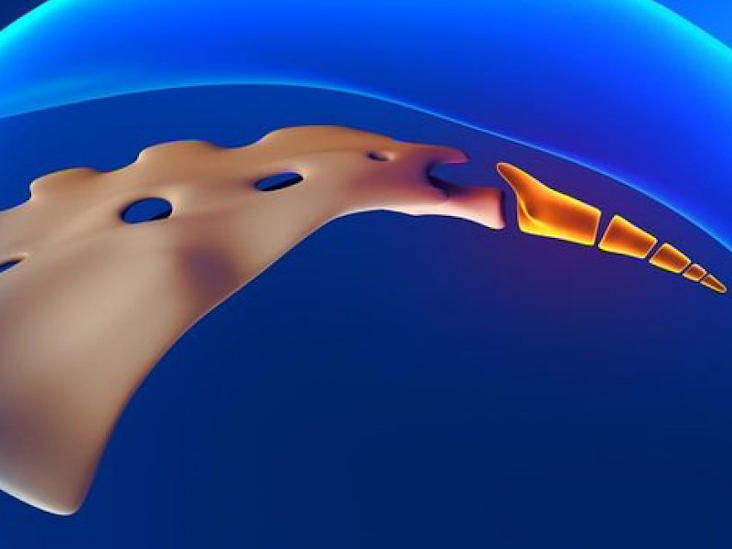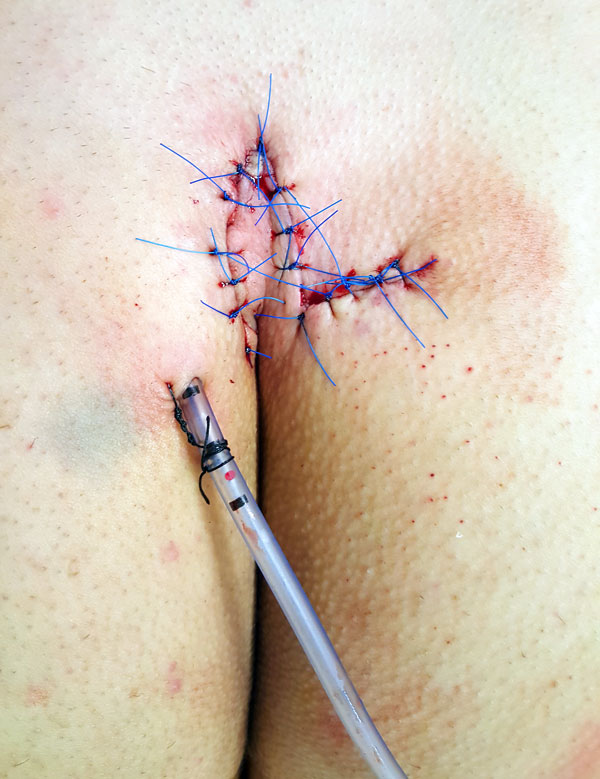The pilonidal cyst, or capillary fistula, is a very common disease of the sacrococcygeal area. It is characterized by the formation of a fistula or branching fistulas and a cyst containing hair tufts and dead epithelial cells. It is very common during adolescence and is more common in men than women.
The exact etiology is not entirely known. Heredity and disorders during embryogenesis (poor closing of the midline during the formation of the human body) have been blamed, but it seems that the most common cause is either hairs in the area or hairs that fall out of the rest of the body and accumulate there and then penetrate skin. Skin-to-skin rubbing when walking and pressure (long hours of sitting, especially on hard surfaces, hence the term "jeep disease") result in hair entering the skin and subcutaneous, leading to local reaction and inflammation of the body. The presence of germs exacerbates inflammation and leads to the formation of abscesses, fistulas or even a cavity-cyst.
Aggravating factors are obesity, increased hair growth and occupations that require long hours of sitting.
It is manifested by pain, discomfort in the area, emmision of sanies, granuloma formation, redness and swelling, however the disease is often asymptomatic.
The possibility of malignancy is very rare, but it is not ruled out.
Its treatment is surgical. In the acute phase, which occurs with the formation of an abscess, surgical dehiscence of the cyst and administration of antibiotics is required. In chronic cases, the lesion is removed up to healthy skin and adipose tissue and up to the proximal fascia. To repair the resulting defect there are various surgical techniques, such as complete closing of the wound (closed method), fixation of the skin in the proximal fascia with single or continuous suture (semi-closed method), flap skin transfer (Limberg method) ). Other times the cavity remains and closes for a second purpose (open method). The choice of method depends on the patient and the experience of the surgeon. In all cases, hair removal of the surrounding area is required.
In recent years, the use of a new generation of laser surgery has contributed to a new, completely painless and bloodless pilonidal cyst treatment approach relieving patients of the painful classic cyst removal surgery.
SiLaC (Sinus Laser Closure) laser treatment of pilonidal cyst has significant advantages:
- The treatment with the method is simple, short, bloodless and completely painless.
- Requires minimum hospitalization time (ODC) and zero recovery time.
- Does not cause any trauma, does not require painful changes and use of patches after surgery, while the patient is not exposed to risks of infections or other complications (wound purulence, bleeding).
- The postoperative image of the area is accompanied by an excellent aesthetic result.
- The SiLaC method can also be applied to the treatment of multiple fistulas.
- The size and anatomy of the cyst are not a limitation.
 English
English  Ελληνικά
Ελληνικά 

